Aboriginal and Torres Strait Islander viewers should be aware that this story may contain images or references to people who have passed away.
The light bounces off four soft impressions in the red desert sand: two oval grooves side-by-side and two smaller paw-prints just ahead of them. And then another four, and another, and another … leading straight to a dark hole at the base of a spinifex clump. Gathering around the site, the rangers smile — they’ve found a bilby burrow.
Here on Australia’s Martu country, scientists and Aboriginal rangers are designing a new method for monitoring populations of bilby, a rare desert marsupial.
Different Marsupial, Same Story
There’s something undeniably adorable about the greater bilby.
Found in arid Australia, these medium-sized marsupials have long, floppy ears, silky grey fur, and a thin tail tipped with black and white. Comparisons with rabbits are inevitable, and there are even government and conservation fundraising campaigns focused on the replacing the Easter Bunny with the native “Easter Bilby.”
Well-adapted for the desert environment, bilbies dig spiralling, multi-entranced burrows deep into the red sand, some as deep as 3 meters, and can have up to a dozen burrows across their home range. They emerge at dusk to forage for insects, spiders, seeds, fruit, bulbs, and fungi.
Bilbies are just one of many aridland mammal species to undergo catastrophic declines — or even extinction — since European settlement. More than 10 percent of Australian mammal species have gone extinct since 1788 — a rate of one to two species per decade — totalling 28 endemic land mammals thus far. Those numbers might not appear dramatic, but it equates to a full-on continental collapse of an entire taxa. Mammals are declining faster than any other taxonomic group in Australia, and Australian mammals are disappearing faster than mammals on any other continent in the world.
For bilbies, habitat modification initiated their decline, as parts of the aridlands were converted to agriculture or ranches for sheep and cattle. Settlement introduced predators — specifically feral cats and red foxes — which hunt bilbies. (One camera trap placed outside of a bilby burrow on Martu country recorded a feral cat stalking the area for weeks.)
Even feral rabbits are a problem; they compete with bilbies for food and their presence attracts predators that also hunt bilbies. And conditions for native animals declined further when many Aboriginal people moved off their lands and ceased traditional burning practices that kept country healthy and created habitat for bilbies and other desert fauna.
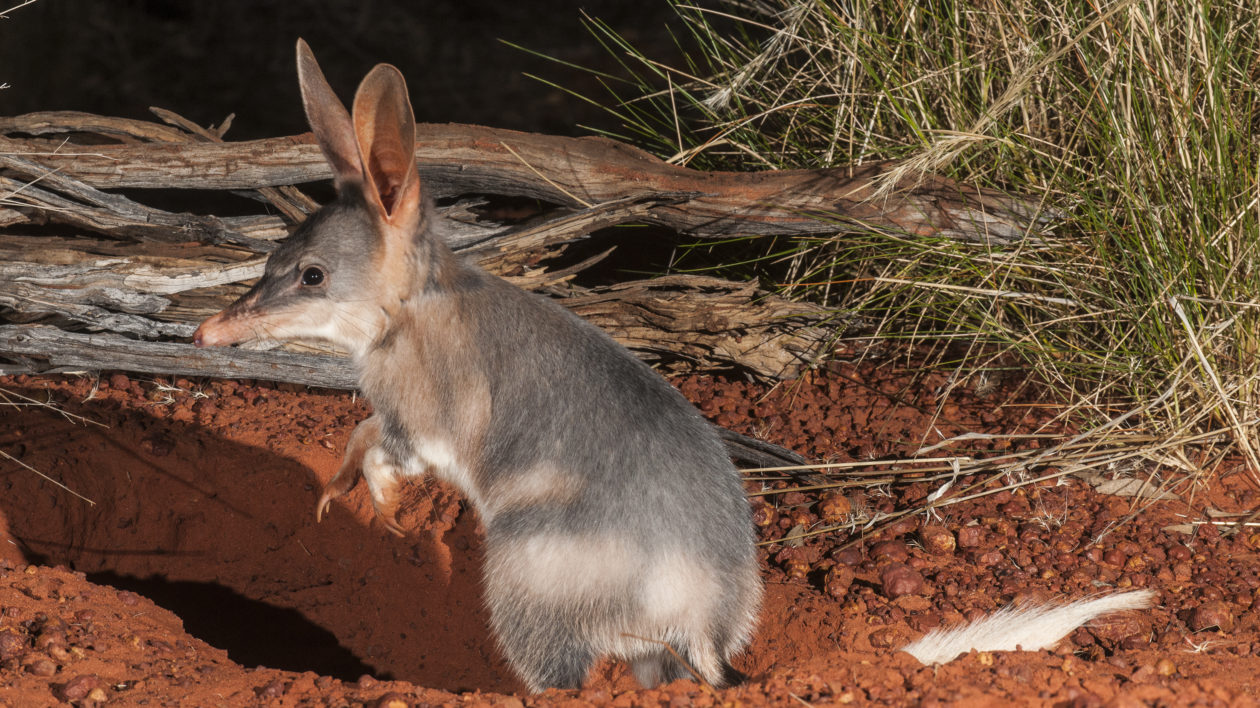
Together, all of these colliding pressures caused bilbies to disappear from around 70 percent of their former range, restricting the remaining populations to the driest and least productive habitat in the central and western deserts, most of which is on Aboriginal country. (A closely related species, the lesser bilby, went extinct by the 1960s.) Bilbies are listed as vulnerable under national law, with populations in different Australian states being classified as vulnerable, endangered or even extinct.
“That’s really worrying, because bilbies are also the last surviving mammal of that size across most of inland Australia,” says Anja Skroblin, a postdoc working with Brendan Wintle from the University of Melbourne and Eddie Game, The Nature Conservancy’s lead scientist for Asia Pacific.
A Mankarr Stronghold on Martu Country
But all is not lost for the bilby. Far away from major cities, across hundreds of kilometers of red desert, a stronghold bibly population is holding on — and perhaps even thriving — on Martu country.
The Martu people are the traditional owners of the Western Desert; a several-million-hectare stretch of land across Western Australia that forms part of the largest intact arid ecosystem on earth. The Martu have lived on this land for at least 5,000 years, with the exception of a two-decade absence in the 1960s to 1980s, when they left their country to live in government-run missions.
Awarded rights to their land by the government in 2002, the Martu continue their cultural practices to care for their country. With the support of the Conservancy’s Australia program and BHP, rangers teams from the four communities — Punmu, Parnngurr, Kunawarritji, and Jigalong — work with the Martu cultural organization Kanyirninpa Jukurrpa (KJ), applying both traditional knowledge and western approaches to burn country, control feral species, map and care for waterholes, and protect threatened fauna, including the bilby.
Bilbies are notoriously difficult to find. Like many desert mammals, they only occur in low densities across the landscape and are highly mobile, following shifting food resources. Even though bilbies are nocturnal, spotlighting is ineffective because the bilbies often forage amidst the thick, spiky spinifex grass. (And on Martu country, there aren’t many roads from which to search.) Scientists have tried everything from scouting for burrows on horseback to drones to extracting DNA from scat to monitor bilby populations, but no one method has proved exceptionally effective (or affordable) for all parts of the bilby’s range.
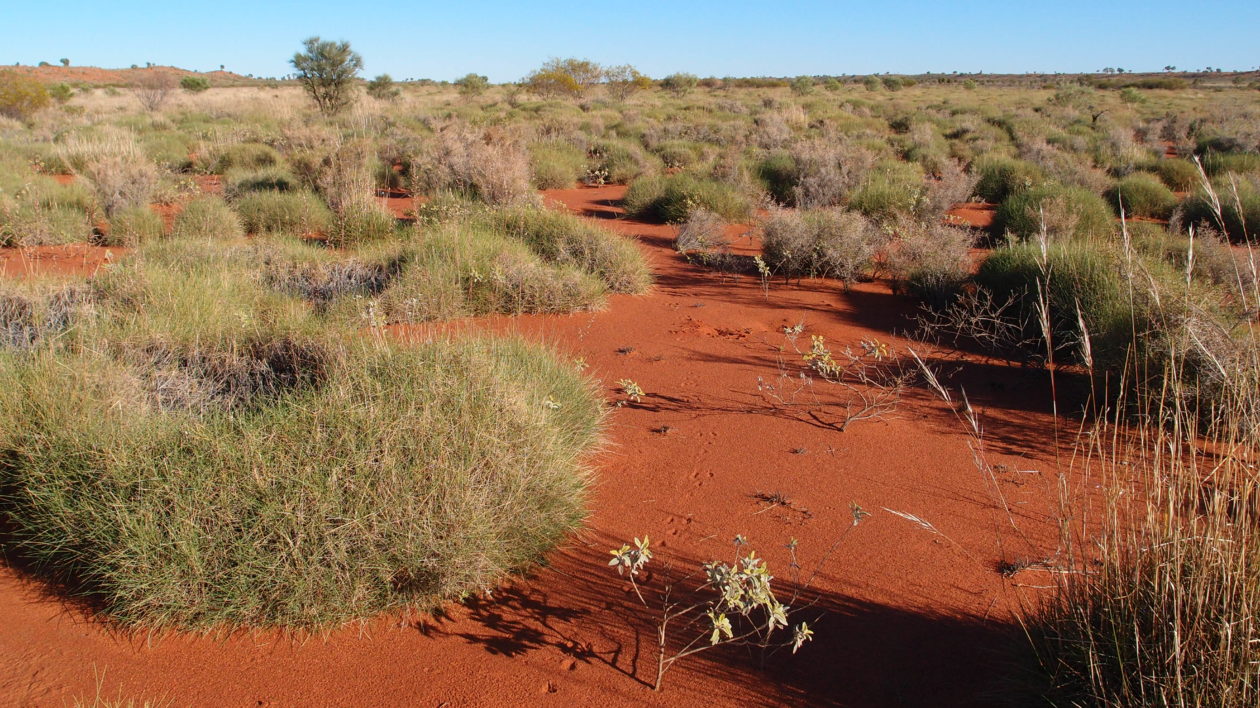
The most common survey method — for both bilbies and other threatened species — is to search for tracks and other sign in randomized 2-hectare plots. Ranger teams throughout the deserts have used this system to monitor for bilby — called mankarr in Martu language — and other wildlife for more than a decade. “The first goal was really to find out where bilbies were,” says Skroblin, “because the Western Desert is extremely remote and people had very little idea of where bilbies occurred across that landscape.”
The 2-hectare system has helped Martu and scientists get a rough idea of bilby distribution. But Martu want to know more about the health of bilby populations on their country, including whether burning and other cultural practices are beneficial to bilbies. With these goals in mind, Skroblin is now working with Martu rangers to design a bilby-specific monitoring protocol that will incorporate traditional ecological knowledge and allow for more targeted data collection.
Tailoring Bilby Survey Methods for Martu
First, Skroblin spent time talking to Martu elders to record their knowledge of bilby distribution, behavior, life history, food preferences, fine-scale habitat use, and how fire influences bilby distribution. “We can use that information to make habitat distribution models, which help us define where sites to monitor bilbies will go into the future,” says Skroblin. “And it helps inform what types of data the rangers should gather.”
They then used this traditional knowledge to refine the initial methodology to be better suited to both bilby-focused monitoring and the Martu rangers conducting the work. “Rangers were particularly interested in trialing a method where they didn’t search within a random 2-hectare area,” says Skroblin, “but instead use their expert knowledge to decide which part of the landscape to survey.”
In addition to collecting data on bilby sign, rangers will now record a wealth of other data, including: vegetation types, favorite bilby food sources, and the presence of feral predators (cats and foxes) or feral herbivores (camels, donkeys, cattle). They will also record fire history, including whether the sites have the patchwork mosaics characteristic of Martu hunting burns. The data-collection system will include both English and Martu language terms to ensure it is accessible to as many people as possible.
The next step was trialing the new methodology with the ranger teams to get direct feedback on how it worked in the field. In September 2016, the Punmu rangers conducted surveys using the standard 2-hectare method while carrying a GPS tracker. Skroblin used that data to measure how much ground the rangers covered, how long it took them to search the area, and if they found any sign of bilbies. Then as the week ended, the rangers ran a similar trial where they searched from a central point without a defined perimeter.
Feedback from those initial trials was positive. “The rangers were enthusiastic and preferred walking in free-form rather than in a 2-ha area,” Skroblin says. “Martu said it was a better way of walking to find bilby sign and they enjoyed what they were doing even though it was the end of a long week.”
Skroblin is now running a simulation analysis to quantify how the rangers’ search patterns influences bilby detection. She wants to test if a more freeform search will increase both the amount of land surveyed and likelihood of encountering bilby sign.
Even before the research is finished, Martu are increasingly able to carry out the bilby searches independently. Skroblin says that with the earlier monitoring protocols, rangers struggled with the data recording. “Because Martu helped design the new datasheets, we are now seeing rangers having discussions on how to classify the habitat type and recording data without the assistance of ranger coordinators,” she says.
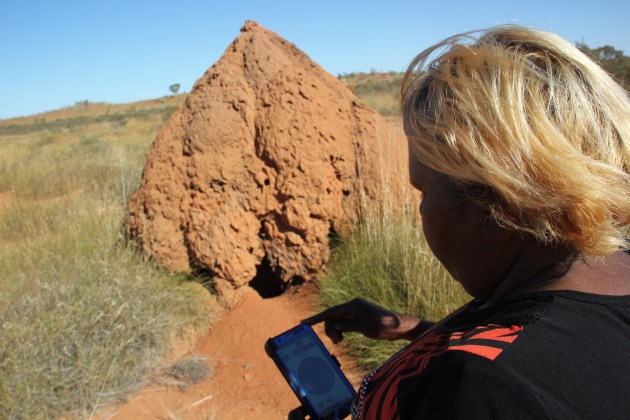
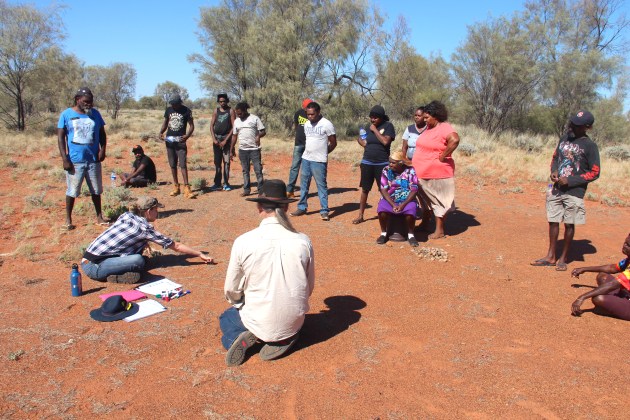
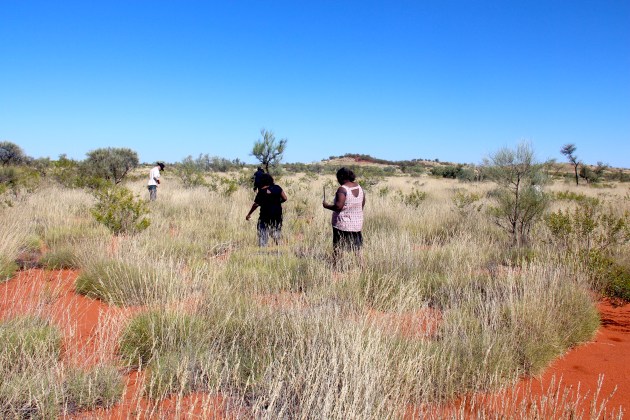
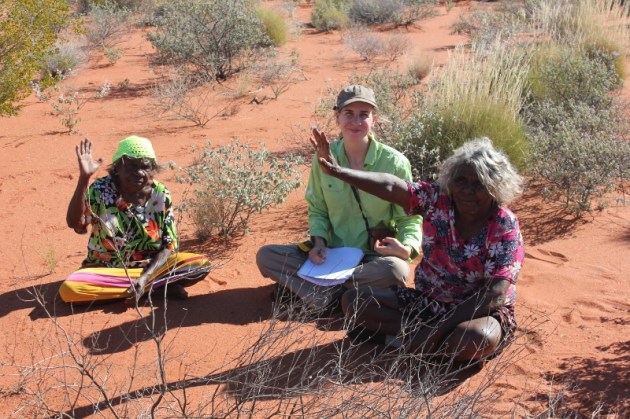
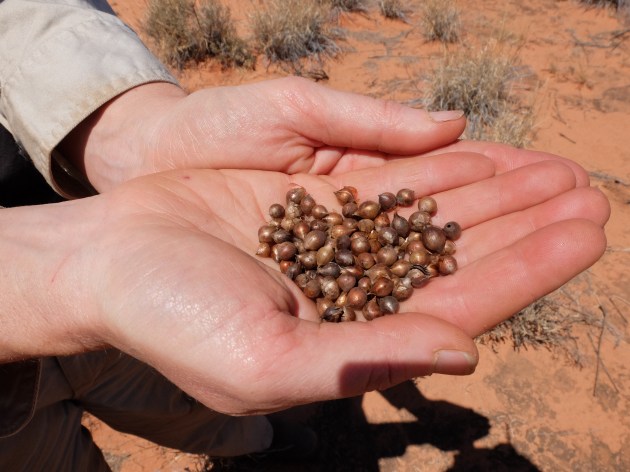
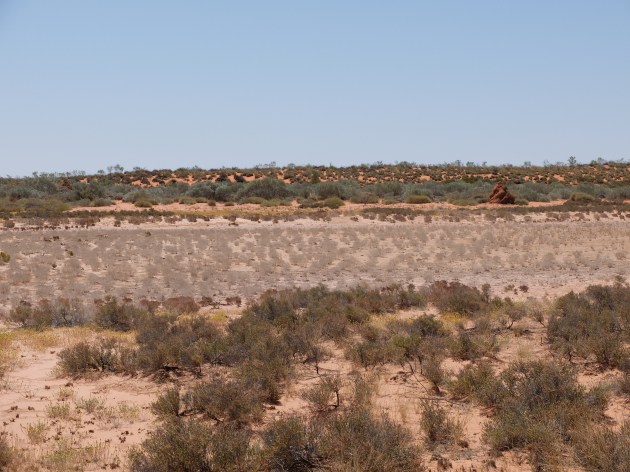
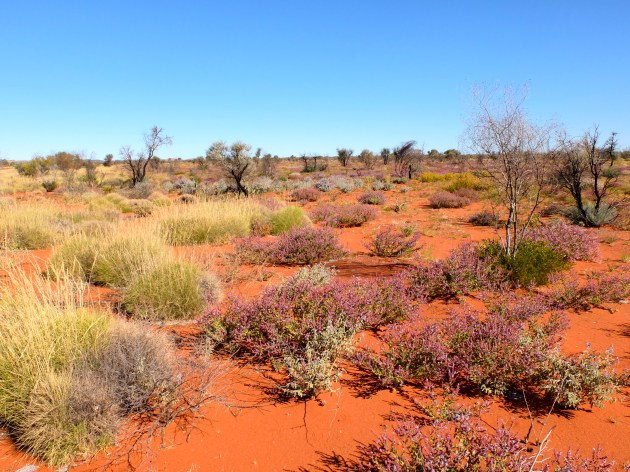
Indigenous Knowledge is Key for Conservation
Incorporating indigenous knowledge into monitoring is critical for the success of conservation efforts on indigenous lands. “This project exemplifies what threatened species monitoring needs to include,” says Skroblin. “It needs strong engagement with the local people, and they need to have buy-in to the project.” She says that effective monitoring methods also need to take into account the relative rarity of many desert species.
With an improved monitoring system, KJ rangers can undertake more targeted steps to protect bilbies on their country. Data from the monitoring program will help determine if the bilby population is declining, stable, or growing, and will hopefully indicate if and how Martu cultural practices are influencing bilby numbers and habitat health, as well as direct conservation efforts in the future.
Conservation in the Western Desert is critical for the health of the entire bilby population. Rachel Paltridge, a wildlife ecologist at Desert Wildlife Services, has worked with indigenous communities in the Western Desert for more than 20 years. She is currently assisting rangers from the Kiwirrkurra Indigenous Protected Area — which borders Martu country to the east — with monitoring for threatened species, including bilby, great desert skink, and mulgara. “From Kiwirrkurra across to Martu country is near the southern end of the bilby’s distribution,” says Paltridge, “so we want to hold that line and stop the contraction of their range.”
The Australian government has spent considerable amounts of money establishing new bilby populations, protected from predators behind fences. But both Paltridge and Skroblin note that continued protection for wild populations on Aboriginal country is critical for both the species’ survival and indigenous culture.
In her work with the Martu rangers, Skroblin senses a heavy responsibility to care for the wildlife that has survived in the wake of extinction and degradation by European settlement and the Martu’s absence from country.
“From talking to the elders, my interpretation is that … there is a huge sense of loss that the older people especially feel for all the animals that have already disappeared, including the mala, golden bandicoot, possum, quoll,” says Skroblin. “The bilby is so important because it’s still there, and they want it to be there for their children as well.”
Dr. Anja Skroblin is a member of the Dr. Anja Skroblin is a member of the Threatened Species Recovery Hub. Her research is supported by the Australian Government’s National Environmental Science Programme and the Martu Living Deserts Project. Funded by BHP, the Martu Living Deserts Project seeks to conserve part of the world’s most intact desert.
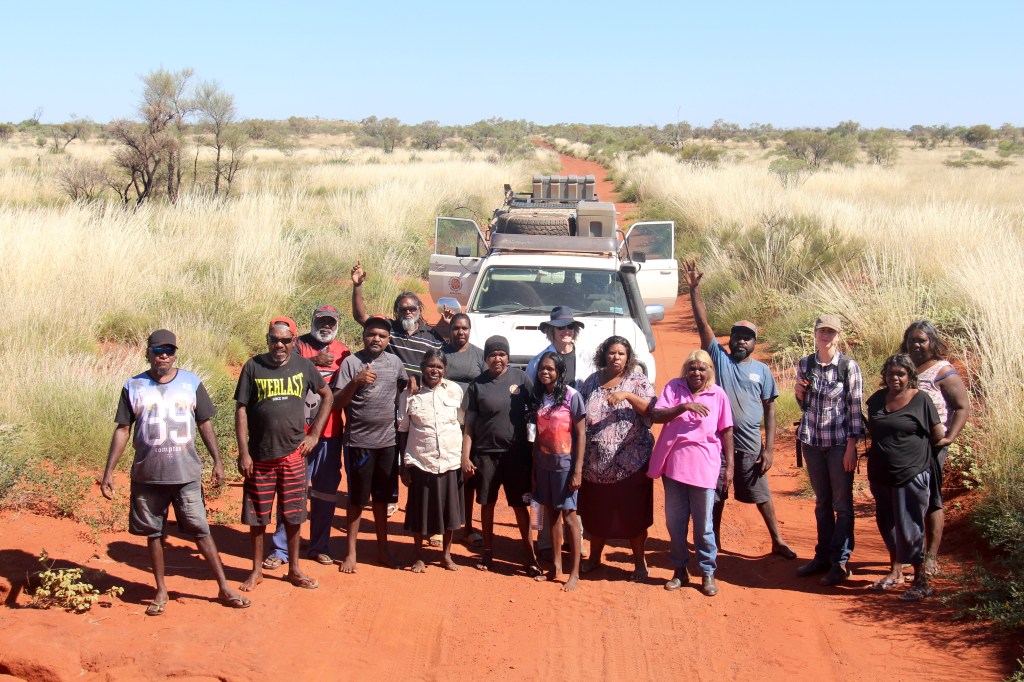



Join the Discussion